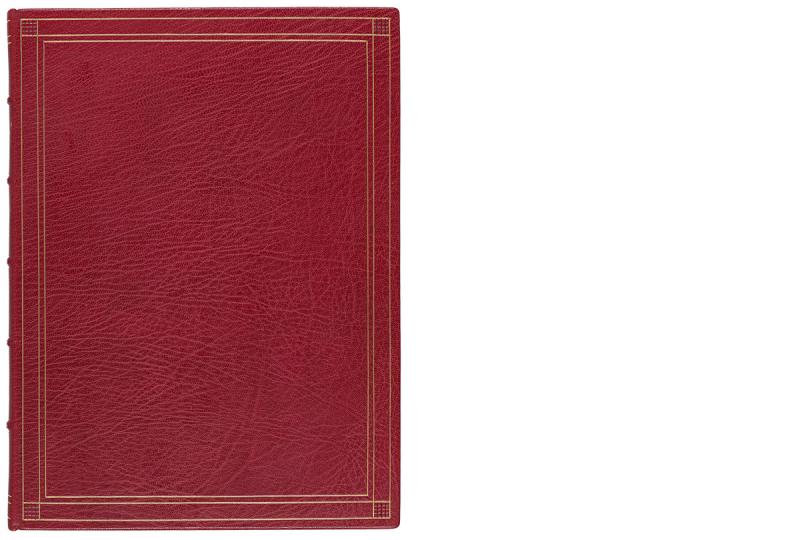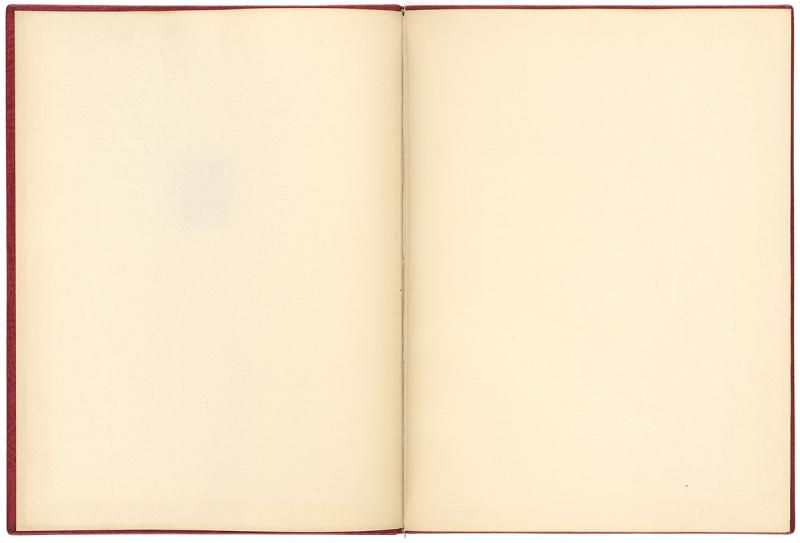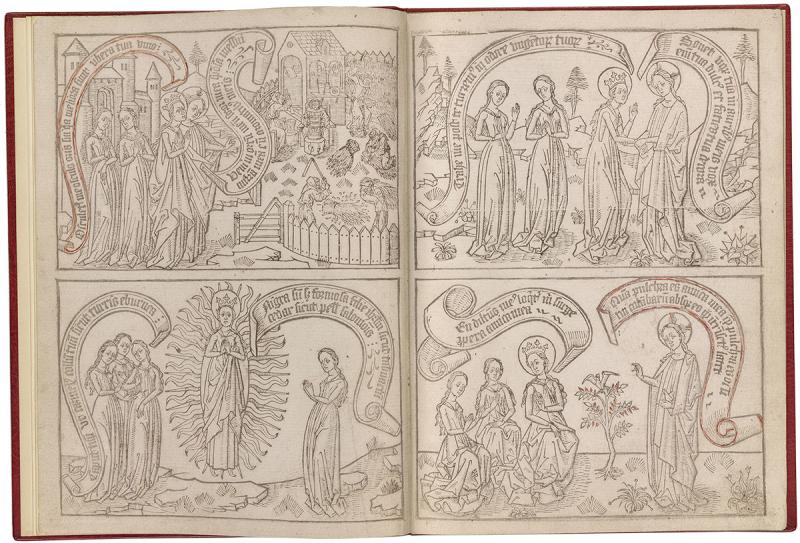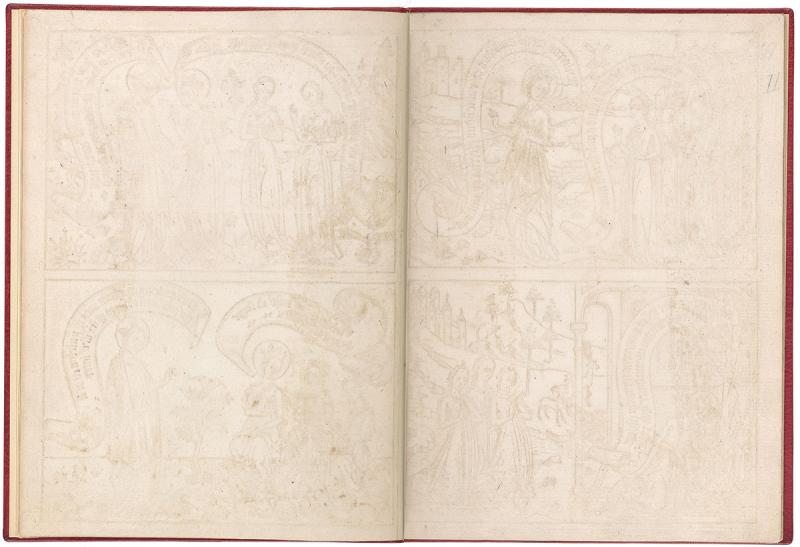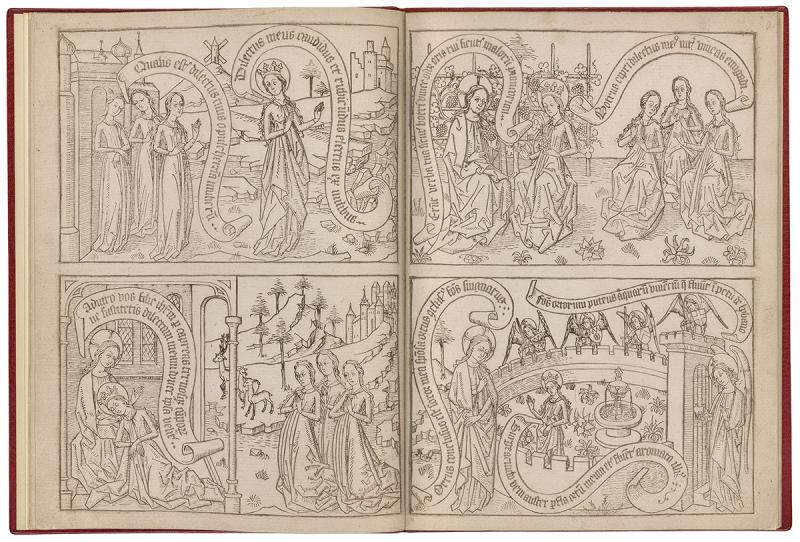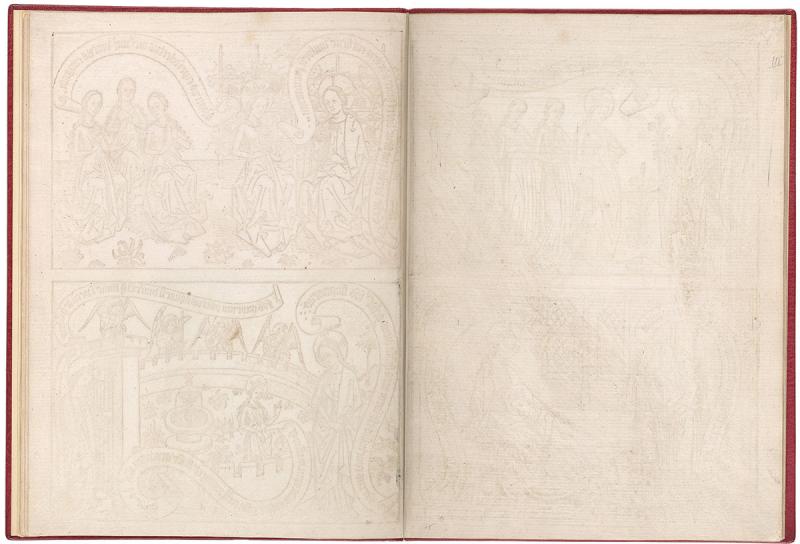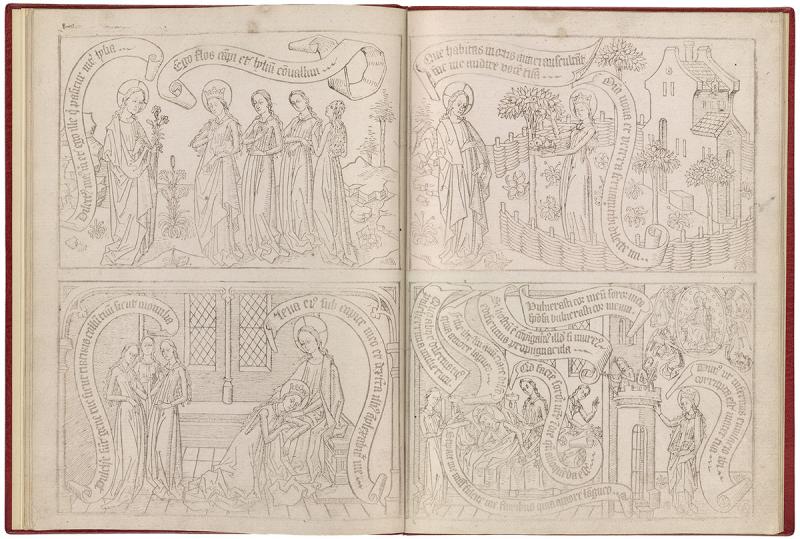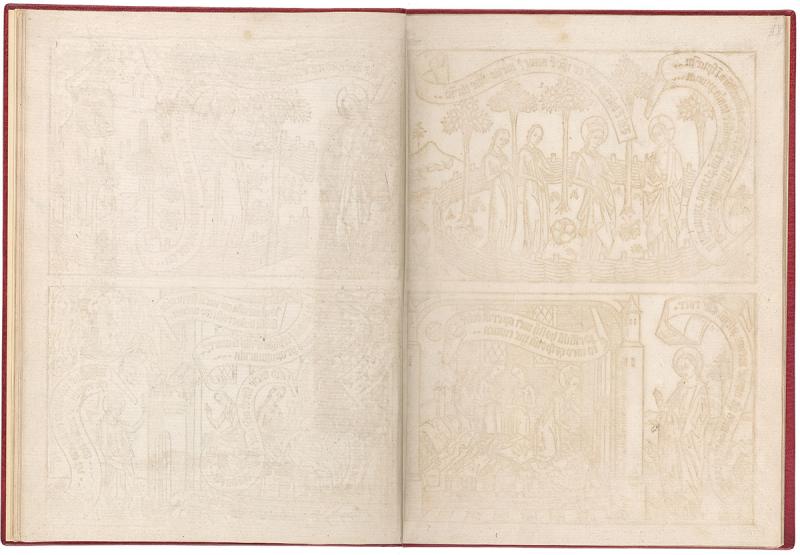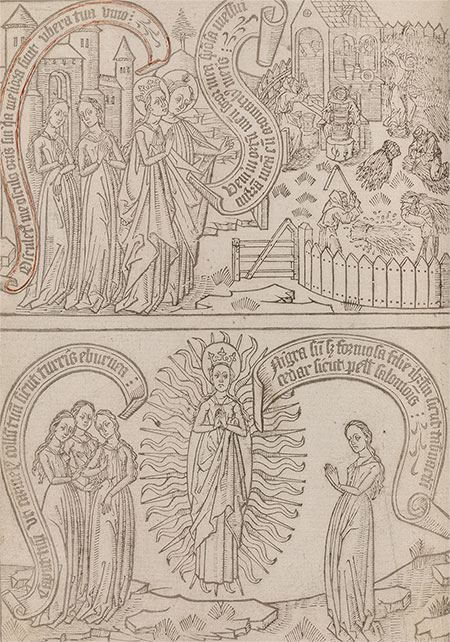
A blockbook is a genre of late-medieval book produced entirely from woodcuts, where the text and image are carved together into a wooden block and printed. Blockbooks are typically printed on one side of the paper only. This is due to the fact that printing was accomplished by placing the paper onto the woodblock and then rubbing the paper so that the ink would transfer from the wood to paper. This produced an embossed impression of the woodcut on the blank side of the sheet. Because of this rubbing process, both sides of the sheet could not be printed. The ease and speed of printing a blockbook allowed them to be produced to order, the first print-on-demand books. Interestingly, the printed sheets could be used like posters, mounted to a board or wall, for public display, or they could be folded in half and bound into book format for personal use.
The Canticum canticorum blockbook illustrates the Christian allegory of divine love derived from the Old Testament book of the Song of Solomon or Song of Songs (Canticum canticorum in the Latin Vulgate). In the Christian tradition, the Bridegroom represents Christ and the Bride represents the individual’s soul or the Christian Church. There are two editions of this blockbook: the first (represented by this copy) was printed in the Netherlands about 1465, while the second was printed in Germany about 1469–70. The Canticum canticorum blockbook was printed from eight woodblocks, on each of which were carved four scenes (two on the left, two on the right) for a total of thirty-two scenes.
The Morgan Canticum canticorum (PML 21990) is in book format, with the sheets of paper folded in half so that there are two scenes per page; the blank sides of the sheets were previously glued together. Of the eight sheets of paper used to print this copy, seven sheets have two anchor with a cross watermarks, while the mark in one sheet is a tower with the word “nay” over the portal. The anchor/cross marks (Briquet 384 and Piccard online 118396 (VI,2: Nr. 735)) are twins, two versions of the same mark that appear in the left and right side of twin paper moulds. This mark is attributed a Basel paper mill in 1460 and found in eastern France and the Netherlands to 1466. The tower mark (Briquet 15894) is from the Abbaye of St. Jacques (Liège), 1459 and found in the Netherlands to 1465. The greenish coloration of the ink on folios 7 and 8 (the Liège sheet of paper) is the result of a reaction between the ink and chemical structure of the paper. An early owner/reader outlined the first and last speech scrolls on folios 1v and 2r in red and corrected the printed text in the lower scene on folio 7v: “exspolia[vi] me tunica” (Song 5:3).
Image titles are derived from: Marilyn Aronberg Lavin, An Allegory of Divine Love: The Netherlandish Blockbook Canticum canticorum (Philadelphia: Saint Joseph’s University Press, 2014).

